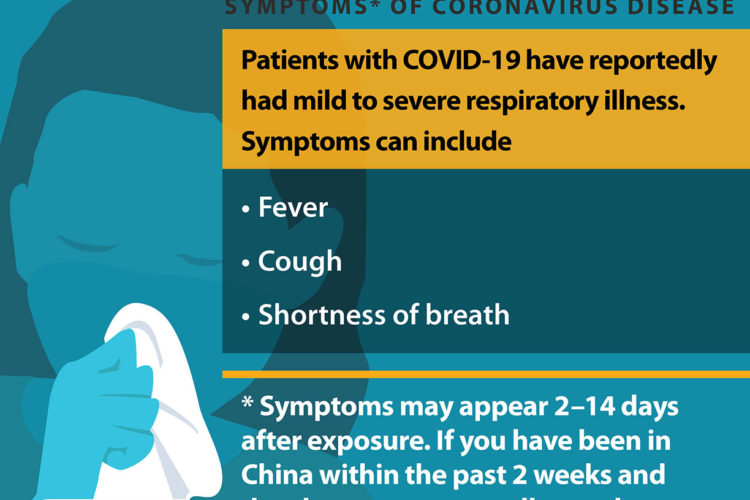The coronavirus (Covs), specifically the COVID-19 strain, has gained worldwide attention.
The health of the constituents in my district is vital to me, which is why I want to educate the people on COVID-19, the strain which is currently trending worldwide. I want to thank my aide, Ivette Moreno, who has a Master of Biomedical Sciences and has done an externship with the CDC, for helping to research and put this article together.

I sit on the Large Urban County Caucus for the National Association of Counties and on March 1st, 2020, at our Annual Legislative Conference in DC, we heard from Dr. Mitchell Wolfe, Chief Medical Officer of the Director, Centers for Disease Control and Prevention (CDC), who spoke on some of the information below to keep us County Commissioners informed and updated on the coronavirus.
Coronaviruses are part of a large family of viruses that are commonly found in different species of animals, including camels, cattle, bats, and cats. An animal coronavirus can rarely cause infection in humans and then spread within populations such as it has with previous strains including MERS-CoV, SARS-CoV, and now this new strain COVID-19 (3).
When we first heard of the coronavirus, the prevailing theory was that the virus originated from Wuhan city, Hubei Province, China, at a Chinese “wet market.” These meat marketplaces sell dead and live animals along with other produce. Experts now say the origins of COVID-19 may be more complex (2). Many of the early cases had no reported links of exposure to the wet market, leading experts to conclude that the spread of the virus is by person-to-person through close contact or respiratory droplets (3).
My initiative with the bat conservation project, in partnership with Florida Bat Conservancy, in early 2019 was to help bats, an endangered species, due to habitat loss by overdevelopment. Bats play an essential role in the environment as they are a key player in many agricultural life cycles and are nature’s insect control (4). The commonly asked question was, can we link the coronavirus to bats? The answer based on available scientific evidence is no (1).
Shari, our bat expert that I have partnered with states, “The source of human exposure to Wuhan virus, according to the January 29 edition of The New York Times, has yet to be identified. However, in a rush to judgment, far too many public health officials and media outlets are focusing almost entirely on bats. This has been seen in multiple news sources, from CNN to Vice. Such speculation can be counterproductive, especially when acted on as fact.”
According to the CDC, “during the week of February 23, CDC reported community spread of the virus that causes COVID-19 in California (in two places), Oregon and Washington. Community spread in Washington resulted in the first death in the United States from COVID-19, as well as the first reported case of COVID-19 in a health care worker, and the first potential outbreak in a long-term care facility” (3).
COVID-19 may present no symptoms in healthy individuals, which makes it hard to detect and easily transmittable. Many symptoms may be similar to a mild common cold (7). Protect yourself to lower your exposure like you would with the flu: wash your hands frequently with soap and water for at least 20 seconds, avoid close contact with sick people, and avoid touching your eyes, mouth, or nose (6).
“Reported illnesses have ranged from mild symptoms to severe illness and death for confirmed coronavirus disease 2019 (COVID-19) cases (8).
Symptoms may appear 2-14 days after exposure:
- Fever
- Cough
- Shortness of breath
Call your healthcare professional if you develop symptoms, and have been in close contact with a person known to have COVID-19 or if you have recently traveled from an area with widespread or ongoing community spread of COVID-19″ (8).
- Moratelli, R., and Calisher, C.H. (2015). Bats and Zoonotic Viruses: Can We Confidently Link Bats With Emerging Deadly Viruses? Memorias do Instituto Oswaldo Cruz 110, 1–22.
- Eschner, K. (2020). We’re still not sure where the Wuhan coronavirus really came from. Popular Science. https://www.popsci.com/story/health/wuhan-coronavirus-china-wet-market-wild-animal/.
- 2019 Novel Coronavirus (2019-ncov) Situation Summary. February 29, 2020. https://www.cdc.gov/coronavirus/2019-nCoV/summary.html
- Bat conservation trust, (2020) Why Bats Matter https://www.bats.org.uk/about-bats/why-bats-matter
- Update: Public Health Response to the Coronavirus Disease 2019 Outbreak — United States, February 24, 2020 https://www.cdc.gov/mmwr/volumes/69/wr/mm6908e1.htm?s_cid=mm6908e1_w
- Coronavirus disease 2019 (COVID-19), Prevention & Treatment. https://www.cdc.gov/coronavirus/2019-ncov/about/prevention-treatment.html
- Cristiano Salata, Arianna Calistri, Cristina Parolin, Giorgio Palù, Coronaviruses: a paradigm of new emerging zoonotic diseases, Pathogens and Disease, Volume 77, Issue 9, December 2019, ftaa006, https://doi.org/10.1093/femspd/ftaa006
- Coronavirus disease 2019 (COVID-19), What You Should Know. February 29, 2020. https://www.cdc.gov/coronavirus/2019-ncov/about/symptoms.html
